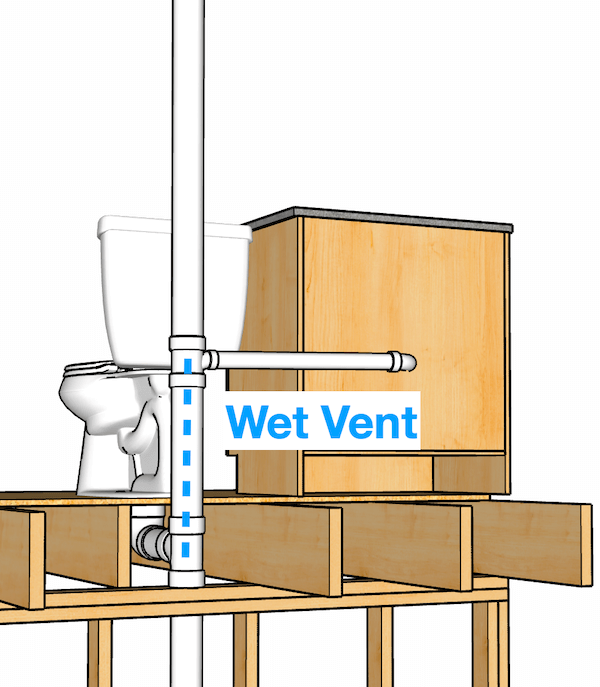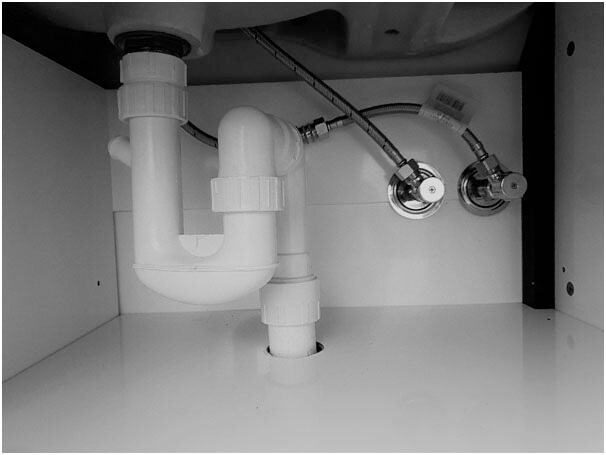Correct Ventilation in Plumbing Systems: How It Matters
Correct Ventilation in Plumbing Systems: How It Matters
Blog Article
Everybody will have their own unique opinion with regards to The Upsides of Proper Ventilation in Plumbing Design.

Correct air flow in pipes systems is typically overlooked, yet it is critical for keeping the functionality and safety and security of your home's pipes. Air flow aids control atmospheric pressure, prevent the buildup of unsafe gases, and guarantee the reliable elimination of waste. In this guide, we will explore the significance of correct pipes ventilation, exactly how it works, and the advantages it brings to your pipes system.
Recognizing Ventilation in Pipes
Ventilation in pipes describes the network of pipelines that permit air to flow via the water drainage system. These vents serve multiple objectives, including regulating air pressure within the pipes, stopping drain gases from getting in the home, and aiding in the smooth circulation of wastewater.
Just How Ventilation Works in Plumbing Equipments
Air Pressure Regulation
Appropriate ventilation maintains balanced air pressure within the plumbing system. When water moves via pipes, it displaces air. Without sufficient air flow, this displacement can create unfavorable pressure, resulting in reduce drains pipes or siphoning of water from traps, which can cause undesirable smells to permeate right into the home.
Protecting Against Sewer Gas Buildup
One of one of the most crucial functions of pipes vents is to stop drain gases, such as methane and hydrogen sulfide, from building up within the home. These gases can posture severe health and wellness dangers and are extremely combustible. Vent pipelines permit these gases to leave safely outdoors.
Helping in Waste Removal
Air flow helps in the reliable elimination of wastewater by preventing airlocks in the water drainage system. When air can flow easily via the vents, it permits water and waste to stream efficiently through the pipes, lowering the risk of blockages and back-ups.
Types of Plumbing Vents
Key Stack Vent
The major stack vent, additionally called the air vent pile, is the primary vent in a plumbing system. It extends from the primary drainpipe align via the roofing, enabling gases to run away and fresh air to go into the system.
Branch Vent
Branch vents link to the major pile air vent and offer specific fixtures, such as sinks, commodes, and showers. These vents guarantee that each fixture has sufficient ventilation to work effectively.
Air Admission Valve (AAV).
An Air Admission Shutoff (AAV) is a one-way valve that enables air to get in the pipes system without the demand for a traditional vent pipe extending through the roofing system. AAVs are commonly made use of in renovations or areas where mounting a conventional vent is not practical.
Indications of Poor Ventilation in Pipes.
Slow Draining Fixtures.
If your sinks, tubs, or bathrooms are draining gradually, it could be an indicator of bad air flow. Insufficient air circulation can create a vacuum cleaner impact, making it difficult for water to drain correctly.
Gurgling Appears.
Gurgling audios originating from drains pipes are commonly an outcome of air being sucked with water catches as a result of unfavorable stress in the pipes. This is a clear indicator of inadequate air flow.
Unpleasant Smells.
Sewage system smells inside your home are a red flag that your pipes system is not effectively ventilated. This could mean that drain gases are not being adequately aired vent outside, causing potentially unsafe conditions.
Usual Air Flow Mistakes.
Inadequate Vent Sizing.
Utilizing undersized air vent pipelines can bring about inadequate air circulation and pressure discrepancies in the system. It's essential to utilize vents that satisfy the details requirements of your plumbing system.
Improper Vent Positioning.
Positioning vents also far from the components they serve can minimize their effectiveness. Proper placement makes sure that air can stream openly and efficiently through the system.
Ignoring Code Demands.
Building ordinance provide details guidelines for pipes ventilation. Overlooking these codes can result in a system that stops working to operate properly and may lead to pricey fixings or health hazards.
Advantages of Appropriate Ventilation.
Enhanced System Performance.
Appropriately aerated plumbing systems run much more efficiently, with fewer obstructions, faster draining, and much less pressure on the pipes. This effectiveness expands the life expectancy of the plumbing system.
Improved Air Quality.
By avoiding sewer gases from entering your home, correct air flow contributes to better indoor air top quality, making your living atmosphere healthier and a lot more comfy.
Protecting Against Water Damage.
Ample air flow aids stop water from being siphoned out of catches, which can lead to drain gases getting in the home and creating water damages in time.
Steps to Make Sure Appropriate Ventilation.
Consulting Plumbing Codes.
Constantly consult regional pipes codes when developing or modifying your pipes system. These codes offer the needed standards for appropriate venting and guarantee your system satisfies safety criteria.
Normal Examination and Upkeep.
Routine assessments can help determine prospective air flow problems prior to they come to be significant troubles. Upkeep tasks, such as cleaning air vent pipes and looking for clogs, are vital for keeping the system in good working order.
Professional Setup.
For brand-new setups or significant alterations, it's wise to work with a professional plumbing professional. They have the knowledge to ensure the air flow system is appropriately created and installed according to code.
Conclusion.
Correct air flow is an important component of any kind of pipes system, guaranteeing that it works effectively and safely. By recognizing the importance of air flow, identifying the indications of bad ventilation, and taking actions to maintain your system, you can avoid pricey concerns and secure your home's air quality.
Understanding the Role of Your Plumbing Vents in the Drainage System
The plumbing system in your home is more than just the kitchen sink, toilet, and bathroom. Some problems that arise within home plumbing are hard to detect because homeowners may not understand potential causes.
One part of the plumbing system that could cause you endless problems is the venting. The drain lines that run through your home and drain wastewater need proper venting to function properly. Faulty plumbing vents can lead to several problems that require the expertise of a plumber to check them out. Before finding experienced plumbing services, there are a few things to learn about plumbing vents.
Why vents are vital
Vents in the plumbing system lead to an outside area such as the roof or the back. The function of these vents is to keep sewer gases away from the drain pipes. They also establish seals in the drainage pipes that prevent the sucking back of waste gases into the home. Venting in the plumbing system also allows oxygen to get into the drainage system, which is an essential component in the breakdown of waste matter. The vents also ensure that the air pressure within the drainage system remains balanced, facilitating the flow of wastewater.
Possible problems
When the plumbing vents are problematic, one of the consequences is imbalanced water levels in the toilet. If you notice that the levels in the toilet bowl rise and fall all the time, then there may be something wrong with the vents.
Another issue is air bubble formation within the toilet. In most cases like these, the drain pipes are not receiving enough air. Lack of air pressure equalization is what leads to water flow problems. If you come across such issues in your home, make sure you call professional plumbers, such as the ones from Perfection Plumbing & Drain Cleaning Ltd.
Potential causes
Several scenarios can lead to some of the plumbing problems that homeowners suffer because of venting. One such scenario is the use of incorrectly sized vents. Usually, vents are the same size as the drain line to facilitate proper venting. Vents that are too small will lead to some plumbing issues. Another potential cause is fixtures that are not close enough to the vents. In this scenario, air forces itself through the traps of other fixtures, leading to gurgling sounds from toilets and sinks.
Most of these problems also happen with clogged vents. Tree leaves and debris can cause clogging when they make their way down a vent. Unclogging plumbing vents is a service that you can entrust to Saskatoon plumbers. They will know how to snake down vents and remove clogging stuck in fixtures.

I stumbled upon that article about when doing a lookup on the web. Are you aware of someone else who is involved in the topic? Take a moment to share it. Thanks so much for your time spent reading it.
Further Details Report this page